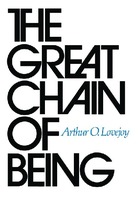| dc.contributor.author | Arthur O. Lovejoy | |
| dc.date.accessioned | 2016-02-19T22:20:20Z | |
| dc.date.available | 2016-02-19T22:20:20Z | |
| dc.date.issued | 1936 | |
| dc.identifier.isbn | 0674361539,9780674361539,0674361504,9780674361508,1412810264,9781412810265,9780674040335 | |
| dc.identifier.issn | | |
| dc.identifier.uri | http://ir.nmu.org.ua/handle/GenofondUA/14052 | |
| dc.description.abstract | From later antiquity down to the close of the eighteenth century, most philosophers and men of science and, indeed, most educated men, accepted without question a traditional view of the plan and structure of the world. In this volume, which embodies the William James lectures for 1933, Professor Lovejoy points out the three principles--plenitude, continuity, and graduation--which were combined in this conception; analyzes their origins in the philosophies of Plato, Aristole, and the Neoplatonists; traces the most important of their diverse samifications in subsequent religious thought, in metaphysics, in ethics and asesthics, and in astronomical and biological theories; and copiously illustrates the influence of the conception as a whole, and of the ideas out of which it was compounded, upon the imagination and feelings as expressed in literature. | |
| dc.language.iso | English | |
| dc.publisher | Harvard UP | |
| dc.subject | История | |
| dc.subject | History | |
| dc.subject.ddc | 111 | |
| dc.subject.lcc | B105.C5 L6 2009 | |
| dc.title | The Great Chain of Being: A Study of the History of an Idea | |
| dc.type | other | |
| dc.identifier.aich | YG7FT6JPBG7HSBDLKDSMGNFIXKWHBINE | |
| dc.identifier.crc32 | 96667C31 | |
| dc.identifier.doi | | |
| dc.identifier.edonkey | 3FF784E4B0276D0EC6D4DAB6A6A7BCD6 | |
| dc.identifier.googlebookid | | |
| dc.identifier.openlibraryid | OL15104059M | |
| dc.identifier.udk | | |
| dc.identifier.bbk | | |
| dc.identifier.libgenid | 405936 | |
| dc.identifier.md5 | 8048ECA10BDB2B1D5BFD2CBE5FFC02B6 | |
| dc.identifier.sha1 | 7OF2NGQDTCIIVNBEBUEMYTDIAR4XET7D | |
| dc.identifier.tth | NYG5TFU56B2DKNCLX73VM2JCMTNUQE5PXH45NQQ | |

